Theories about the universe’s origin and ultimate fate often center on how matter could emerge from nothing.
Through an exploration of theoretical constructs like the Planck epoch and quantum fluctuations, alongside Roger Penrose’s conformal cyclic cosmology, a picture is painted of a universe cyclically transitioning between minimal and dense states, potentially explaining the genesis of matter from near-nothingness.
READER QUESTION: My understanding is that nothing comes from nothing. For something to exist, there must be material or a component available, and for them to be available, there must be something else available. Now my question: Where did the material come from that created the Big Bang, and what happened in the first instance to create that material? Peter, 80, Australia.
“The last star will slowly cool and fade away. With its passing, the universe will become once more a void, without light or life or meaning.” So warned the physicist Brian Cox in the recent BBC series Universe. The fading of that last star will only be the beginning of an infinitely long, dark epoch. All matter will eventually be consumed by monstrous black holes, which in their turn will evaporate away into the dimmest glimmers of light. Space will expand ever outwards until even that dim light becomes too spread out to interact. Activity will cease.
Or will it? Strangely enough, some cosmologists believe a previous, cold dark empty universe like the one which lies in our far future could have been the source of our very own Big Bang.
The Emergence of Matter in the Universe
But before we get to that, let’s take a look at how “material” – physical matter – first came about. If we are aiming to explain the origins of stable matter made of atoms or molecules, there was certainly none of that around at the Big Bang – nor for hundreds of thousands of years afterwards. We do in fact have a pretty detailed understanding of how the first atoms formed out of simpler particles once conditions cooled down enough for complex matter to be stable, and how these atoms were later fused into heavier elements inside stars. But that understanding doesn’t address the question of whether something came from nothing.
So let’s think further back. The first long-lived matter particles of any kind were protons and neutrons, which together make up the atomic nucleus. These came into existence around one ten-thousandth of a second after the Big Bang. Before that point, there was really no material in any familiar sense of the word. But physics lets us keep on tracing the timeline backwards – to physical processes which predate any stable matter.
This takes us to the so-called “grand unified epoch.” By now, we are well into the realm of speculative physics, as we can’t produce enough energy in our experiments to probe the sort of processes that were going on at the time. But a plausible hypothesis is that the physical world was made up of a soup of short-lived elementary particles – including quarks, the building blocks of protons and neutrons. There was both matter and “antimatter” in roughly equal quantities: each type of matter particle, such as the quark, has an antimatter “mirror image” companion, which is near identical to itself, differing only in one aspect. However, matter and antimatter annihilate in a flash of energy when they meet, meaning these particles were constantly created and destroyed.
Quantum Fluctuations and the Fabric of Spacetime
But how did these particles come to exist in the first place? Quantum field theory tells us that even a vacuum, supposedly corresponding to empty spacetime, is full of physical activity in the form of energy fluctuations. These fluctuations can give rise to particles popping out, only to be disappear shortly after. This may sound like a mathematical quirk rather than real physics, but such particles have been spotted in countless experiments.
The spacetime vacuum state is seething with particles constantly being created and destroyed, apparently “out of nothing”. But perhaps all this really tells us is that the quantum vacuum is (despite its name) a something rather than a nothing. The philosopher David Albert has memorably criticized accounts of the Big Bang which promise to get something from nothing in this way.
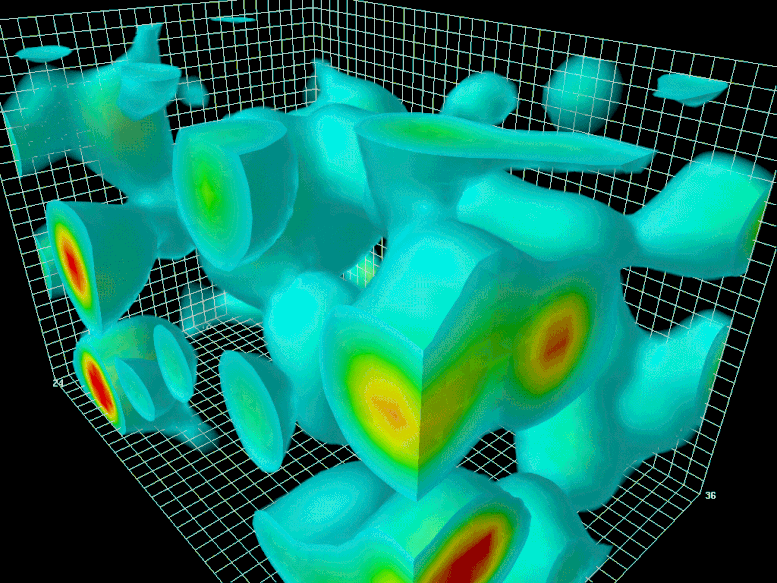
Simulation of quantum vacuum fluctuations in quantum chromodynamics. Credit: Wikimedia/Ahmed Neutron
Suppose we ask: where did spacetime itself arise from? Then we can go on turning the clock yet further back, into the truly ancient “Planck epoch” – a period so early in the universe’s history that our best theories of physics break down. This era occurred only one ten-millionth of a trillionth of a trillionth of a trillionth of a second after the Big Bang. At this point, space and time themselves became subject to quantum fluctuations. Physicists ordinarily work separately with quantum mechanics, which rules the microworld of particles, and with general relativity, which applies on large, cosmic scales. But to truly understand the Planck epoch, we need a complete theory of quantum gravity, merging the two.
Theoretical Physics and the Cosmos
We still don’t have a perfect theory of quantum gravity, but there are attempts – like string theory and loop quantum gravity. In these attempts, ordinary space and time are typically seen as emergent, like the waves on the surface of a deep ocean. What we experience as space and time are the product of quantum processes operating at a deeper, microscopic level – processes that don’t make much sense to us as creatures rooted in the macroscopic world.
In the Planck epoch, our ordinary understanding of space and time breaks down, so we can’t any longer rely on our ordinary understanding of cause and effect either. Despite this, all candidate theories of quantum gravity describe something physical that was going on in the Planck epoch – some quantum precursor of ordinary space and time. But where did that come from?
Even if causality no longer applies in any ordinary fashion, it might still be possible to explain one component of the Planck-epoch universe in terms of another. Unfortunately, by now even our best physics fails completely to provide answers. Until we make further progress towards a “theory of everything”, we won’t be able to give any definitive answer. The most we can say with confidence at this stage is that physics has so far found no confirmed instances of something arising from nothing.
Cycles From Almost Nothing
To truly answer the question of how something could arise from nothing, we would need to explain the quantum state of the entire universe at the beginning of the Planck epoch. All attempts to do this remain highly speculative. Some of them appeal to supernatural forces like a designer. But other candidate explanations remain within the realm of physics – such as a multiverse, which contains an infinite number of parallel universes, or cyclical models of the universe, being born and reborn again.
The 2020 Nobel Prize-winning physicist Roger Penrose has proposed one intriguing but controversial model for a cyclical universe dubbed “conformal cyclic cosmology”. Penrose was inspired by an interesting mathematical connection between a very hot, dense, small state of the universe – as it was at the Big Bang – and an extremely cold, empty, expanded state of the universe – as it will be in the far future. His radical theory to explain this correspondence is that those states become mathematically identical when taken to their limits. Paradoxical though it might seem, a total absence of matter might have managed to give rise to all the matter we see around us in our universe.
In this view, the Big Bang arises from an almost nothing. That’s what’s left over when all the matter in a universe has been consumed into black holes, which have in turn boiled away into photons – lost in a void. The whole universe thus arises from something that – viewed from another physical perspective – is as close as one can get to nothing at all. But that nothing is still a kind of something. It is still a physical universe, however empty.
How can the very same state be a cold, empty universe from one perspective and a hot dense universe from another? The answer lies in a complex mathematical procedure called “conformal rescaling,” a geometrical transformation which in effect alters the size of an object but leaves its shape unchanged.
Penrose showed how the cold dense state and the hot dense state could be related by such rescaling so that they match with respect to the shapes of their spacetimes – although not to their sizes. It is, admittedly, difficult to grasp how two objects can be identical in this way when they have different sizes – but Penrose argues size as a concept ceases to make sense in such extreme physical environments.
In conformal cyclic cosmology, the direction of explanation goes from old and cold to young and hot: the hot dense state exists because of the cold empty state. But this “because” is not the familiar one – of a cause followed in time by its effect. It is not only size that ceases to be relevant in these extreme states: time does too. The cold dense state and the hot dense state are in effect located on different timelines. The cold empty state would continue on forever from the perspective of an observer in its own temporal geometry, but the hot dense state it gives rise to effectively inhabits a new timeline all its own.
It may help to understand the hot dense state as produced from the cold empty state in some non-causal way. Perhaps we should say that the hot dense state emerges from, or is grounded in, or realized by the cold, empty state. These are distinctively metaphysical ideas which have been explored by philosophers of science extensively, especially in the context of quantum gravity where ordinary cause and effect seem to break down. At the limits of our knowledge, physics and philosophy become hard to disentangle.
Penrose’s Theory of Conformal Cyclic Cosmology
Conformal cyclic cosmology offers some detailed, albeit speculative, answers to the question of where our Big Bang came from. But even if Penrose’s vision is vindicated by the future progress of cosmology, we might think that we still wouldn’t have answered a deeper philosophical question – a question about where physical reality itself came from. How did the whole system of cycles come about? Then we finally end up with the pure question of why there is something rather than nothing – one of the biggest questions of metaphysics.
But our focus here is on explanations which remain within the realm of physics. There are three broad options to the deeper question of how the cycles began. It could have no physical explanation at all. Or there could be endlessly repeating cycles, each a universe in its own right, with the initial quantum state of each universe explained by some feature of the universe before. Or there could be one single cycle, and one single repeating universe, with the beginning of that cycle explained by some feature of its own end. The latter two approaches avoid the need for any uncaused events – and this gives them a distinctive appeal. Nothing would be left unexplained by physics.
Penrose envisages a sequence of endless new cycles for reasons partly linked to his own preferred interpretation of quantum theory. In quantum mechanics, a physical system exists in a superposition of many different states at the same time, and only “picks one” randomly, when we measure it. For Penrose, each cycle involves random quantum events turning out a different way – meaning each cycle will differ from those before and after it. This is actually good news for experimental physicists, because it might allow us to glimpse the old universe that gave rise to ours through faint traces, or anomalies, in the leftover radiation from the Big Bang seen by the Planck satellite.
Philosophical Implications and Future Discoveries
Penrose and his collaborators believe they may have spotted these traces already, attributing patterns in the Planck data to radiation from supermassive black holes in the previous universe. However, their claimed observations have been challenged by other physicists and the jury remains out.
Endless new cycles are key to Penrose’s own vision. But there is a natural way to convert conformal cyclic cosmology from a multi-cycle to a one-cycle form. Then physical reality consists in a single cycling around through the Big Bang to a maximally empty state in the far future – and then around again to the very same Big Bang, giving rise to the very same universe all over again.
This latter possibility is consistent with another interpretation of quantum mechanics, dubbed the many-worlds interpretation. The many-worlds interpretation tells us that each time we measure a system that is in superposition, this measurement doesn’t randomly select a state. Instead, the measurement result we see is just one possibility – the one that plays out in our own universe. The other measurement results all play out in other universes in a multiverse, effectively cut off from our own. So no matter how small the chance of something occurring, if it has a non-zero chance then it occurs in some quantum parallel world. There are people just like you out there in other worlds who have won the lottery, or have been swept up into the clouds by a freak typhoon, or have spontaneously ignited, or have done all three simultaneously.
Some people believe such parallel universes may also be observable in cosmological data, as imprints caused by another universe colliding with ours.
Many-worlds quantum theory gives a new twist on conformal cyclic cosmology, though not one that Penrose agrees with. Our Big Bang might be the rebirth of one single quantum multiverse, containing infinitely many different universes all occurring together. Everything possible happens – then it happens again and again and again.
Penrose’s Cyclical Universe: A Myth Reborn
For a philosopher of science, Penrose’s vision is fascinating. It opens up new possibilities for explaining the Big Bang, taking our explanations beyond ordinary cause and effect. It is therefore a great test case for exploring the different ways physics can explain our world. It deserves more attention from philosophers.
For a lover of myth, Penrose’s vision is beautiful. In Penrose’s preferred multi-cycle form, it promises endless new worlds born from the ashes of their ancestors. In its one-cycle form, it is a striking modern re-invocation of the ancient idea of the ouroboros, or world-serpent. In Norse mythology, the serpent Jörmungandr is a child of Loki, a clever trickster, and the giant Angrboda. Jörmungandr consumes its own tail, and the circle created sustains the balance of the world. But the ouroboros myth has been documented all over the world – including as far back as ancient Egypt.
The ouroboros of the one cyclic universe is majestic indeed. It contains within its belly our own universe, as well as every one of the weird and wonderful alternative possible universes allowed by quantum physics – and at the point where its head meets its tail, it is completely empty yet also coursing with energy at temperatures of a hundred thousand million billion trillion degrees Celsius. Even Loki, the shapeshifter, would be impressed.
Written by Alastair Wilson, Professor of Philosophy, University of Birmingham.
This article was first published in The Conversation.![]()

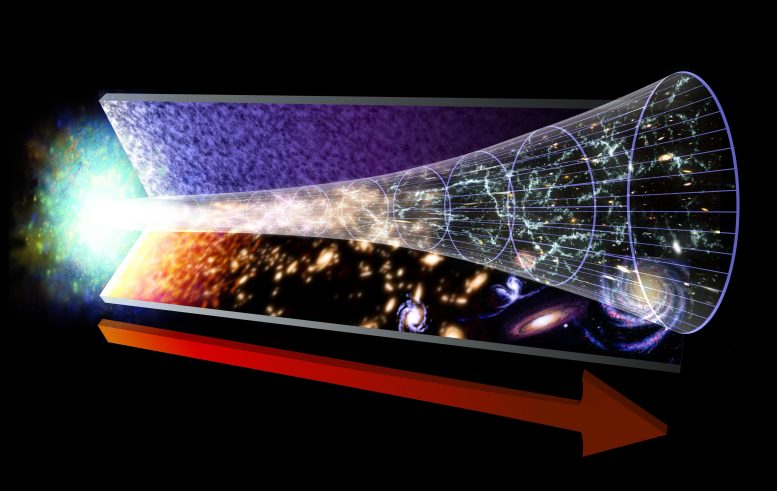
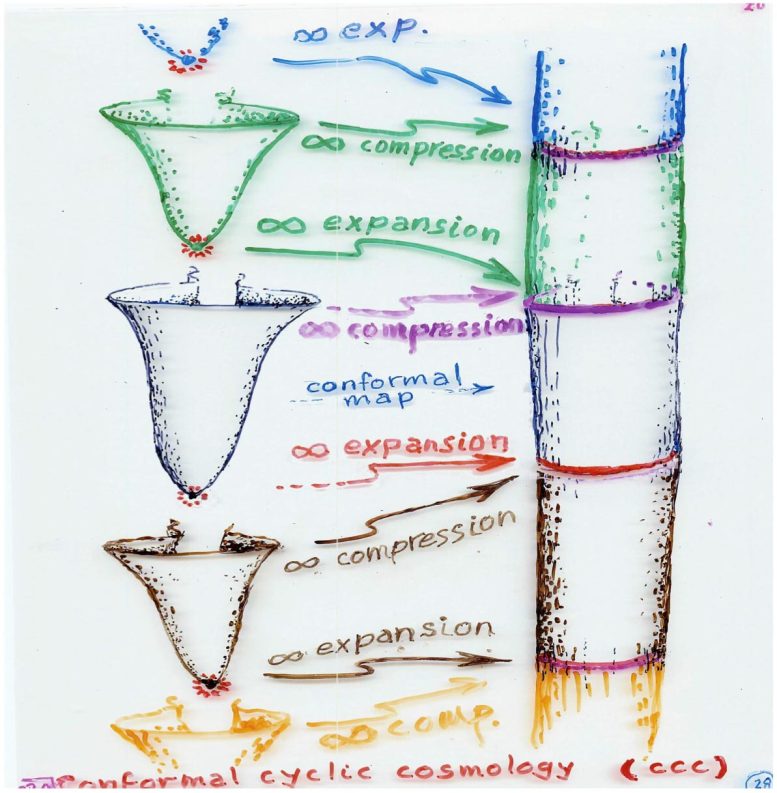
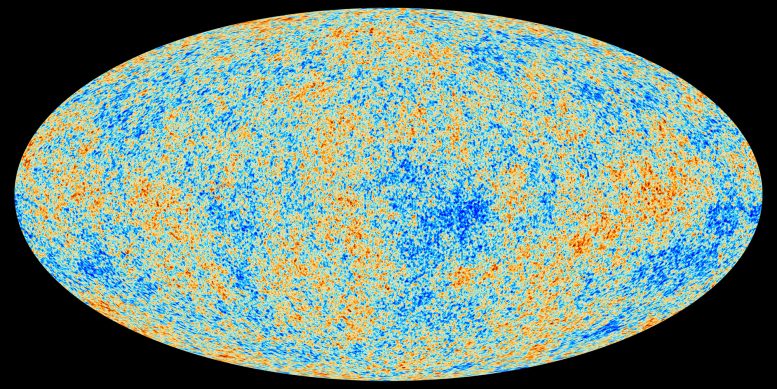
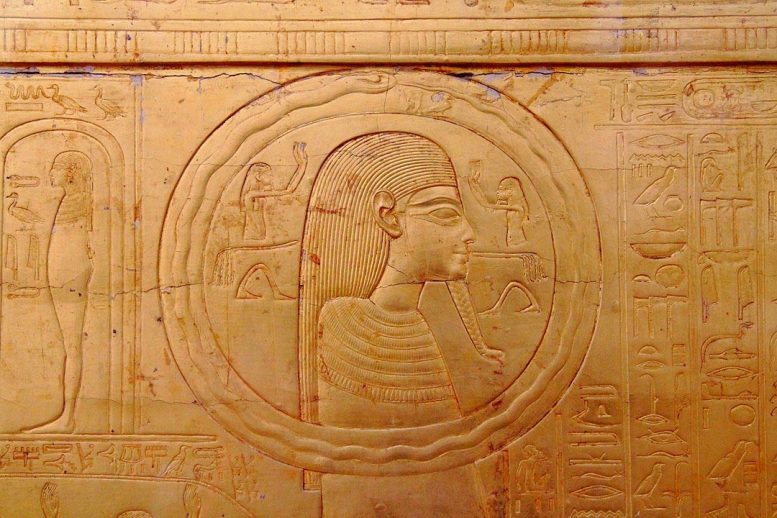
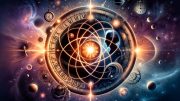

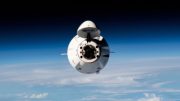




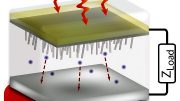
What a load of assumptive gobbledigook.
First of all, the question is wrong, or at least the terminology. The word ‘something’ implies matter, because when we speak of “things” we speak of material things- ie. things with attribues of atomic physical structure. So when we speak of “nothing” we are speaking of that which is NOT of atomic physical structure, such as electrons and the variety of other phenomena we refer to as “sub-atomic particles”.
Sub-atomic particles are therefore “nothings”, and we appear to a have pretty good understanding now that atoms are made of these “nothings”.
So the better question is: Why did sub-atomic particles make atoms?
But this is also a wrong question because it amplies that the universe had a beginning. I think this is an grave error, although I accept that it is a very human error.
It is far too easy to apply human assumptions to a fundamental question but when we do so, we set ourselves up for an exercise in futility, because we simply cannot answer as to whether or not a beginning is factually true. We have no good evidence for it and the “evidence” thus far presented is patchy and may be interpreted in many other ways.
It seems, to me at least, that the universe is a perpetually-recycling chaos. Some stars explode… sometimes as a result of an encounter with another body or because they run out of fuel and set off a chain reaction that blows them apart. Yet others slowly die and solidify into rocky planets which wander into orbit around other planets stars and either fall into that star or wander into nebulae where they coagulate material sufficient to reignite atomic fusion and become reborn stars.
Energy and matter are recycled and reformed over and over again, on a timescale impossible to calculate.
Prove me wrong.
I think it would be a far more honest approach to leave the question of origins aside and focus on what the evidence says. Science demands that honesty.
Matter or energy Einstein’s relativity says they’re the same E= MC2 Matter is anything that has mass and volume.
Your right this is gobbledigook. Im finding more and more of articles like this desperate to cling to anything but a creator. Unfortunately it sure is painful to watch these people mix up theory and scientific law giving more credence to hyperbole and conjecture than absolutes and proof.
Thermodynamics conservation of energy is not something you can work around energy can neither be made nor destroyed. so then according to Einstein matter is mass and volume and energy equals mass x acceleration, so if we cant create or destroy energy you cant then create matter or mass. One things for sure something had to create energy even if it cant be made or destroyed in this universe, that would imply the universe was created by energies formation. Nothing they try to say happening in this universe could create something from nothing. As far as any logical conclusion can go that’s proof of a creator from somewhere other than our universe. It’s the only explanation that follows conservation of energy law. Throwing made up modern day made up imaginary names for something they cant understand like dark energy is not science. Its just Shameful.
Don’t have to prove you wrong. You’re wrong because you cannot prove your right. Scientific Method Mate. All that typing for nothing. Hope you felt better afterward.
Why Is There Something Rather Than Nothing?
A: ) Because Magnetism is an attractive force, not a repulsive force ?
That’s a guess, gravity is also an attractive force.
Isaac Asimov in a book thought it was because there were more protons than electrons in the universe ( thus forming matter )
OK let us go back before there was an alleged Big Bang – a time were there was no motion, or temperature, just a static vacuum field or maybe astatic gravity vacuum field or maybe two of them in static repulsion with no motion ? Assume Stephen Hawking is correct and the universe created itself ? Aren’t people part of that universe ? What if people sent something back in time to start motion into one of those two static gravity fields and the interaction of the two forms duct particles that then form stars etc ? How could this happen if nothing can go back in time ?..I was researching the following article on Wikipedia: Time travel
https://en.wikipedia.org/wiki/Time_travel#cite_note-gauthier-52
” The experiment of Lijun Wang might also show causality violation since it made it possible to send packages of waves through a bulb of caesium gas in such a way that the package appeared to exit the bulb 62 nanoseconds before its entry, but a wave package is not a single well-defined object but rather a sum of multiple waves of different frequencies (see Fourier analysis), and the package can appear to move faster than light or even backward in time even if none of the pure waves in the sum do so. This effect cannot be used to send any matter, energy, or information faster than light, so this experiment is understood not to violate causality either. “
Did you never play with a magnet when you were a child because It seems that you didn’t? Perhaps you might get one and see for yourself why your guess is nonsense?
Asimov even though merely a writer and professor of Biochemistry, was a learned man even if physics wasnt his area of expertise. He is in part correct Dr. Edwin Hubble had made a startling announcement that he had found that all of the distant galaxies in the universe were moving away from us. In addition, their speed was directly proportional to their distance from us An expanding Universe also suggested that earlier in time the Universe was smaller and denser. With Dr. Edwin Hubble’s data, scientists could measure how fast the Universe was expanding. Turning that around, they could calculate how much smaller the Universe was long ago. Scientists have traced the expansion back to a time when the entire Universe was smaller than an atom.
The early Universe contained what would become all the matter and energy we see today. However, since it all existed in such a small space, the Universe was very, very dense. This meant that the temperature was also incredibly high – over 1032 Kelvin. But matter then was unlike what it is today.atoms, protons, neutrons, and electrons all would have been crushed by the incredible density and temperature. The Universe was a “soup” of matter and energy. The Big Bang theory describes how the Universe expanded from this tiny dot, and how the first elements formed. The “Big Bang” is the moment the expansion of the Universe began.Within the first second after the Big Bang, the temperature had fallen considerably, but was still very hot – about 100 billion Kelvin (1011 K). At this temperature, protons, electrons and neutrons had formed, but they moved with too much energy to form atoms. Even protons and neutrons had so much energy that they bounced off each other. However, neutrons were being created and destroyed as a result of interactions between protons and electrons.
As the Universe expanded, the temperature fell. At this point the protons and electrons no longer had enough energy to collide to form neutrons. Thus, the number of protons and neutrons in the Universe stabilized, with protons outnumbering neutrons by 7:1. As it colled further The first atomic nuclei formed at this point. These neutron-proton pairs formed the nuclei of deuterium, a type of hydrogen with an extra neutron. Deuterium nuclei occasionally collided at great speed to form a helium nucleus. On rare occasions there were enough collisions of the deuterium to form lithium. Due to the ongoing expansion of the Universe, the temperature continued to fall rapidly, and soon it was too cool for further nuclei to form. At this point, the Universe was a little more than a few minutes old, and consisted of three elements: hydrogen, helium, and lithium. The high number of protons in the early Universe made hydrogen by far the dominant element: 95% percent of the atoms in the Universe were hydrogen, 5% were helium, and trace amounts were lithium. These were the only elements formed within the first minutes after the Big Bang.
This is the perfect amount for creation, any less would have resulted in no creation, any more would have resulted in no creation either. The odds of this kind of ratio coming into formation at these temperatures in this amount and time were the only way creation would happen. I want to hear someone tell me again theres no intelligent design. lol
I liken it to random clustering. If you flip a coin a trillion times you will wind up with half heads and half tails. So everything cancels and you have “nothing”. But within the sequence you might find 15 “heads” in a row or maybe 25 “tails” in a row. Each such cluster can be considered a SOMEthing. It’s kind of spooky but really it’s not spooky at all.
All this debate depends on the idea that the Redshift means the universe is expanding but what if that is all wrong. What if the Redshift is just a natural phenomenon of waves. It could be that all waves would get longer if they could travel billions of light years. I would definitely find that more believable than the idea that the universe could expand.
Unfortunately, what you happen to believe has no bearing on what is true unless there exists actual evidence for it.
The fundamental problem is that your idea already conflicts with the existing evidence. You might consider reading a textbook or two before trying again.
Its all speculative. Why are you scientists so set on measuring things anyway. Maybe it was just there “before”. Which in itself implies a before and after. Like my Daddy said, time merely “is”. I’m obviously not a scientist, but it all seems so obvious. Why do you think you can’t approach infinity? Isn’t that obvious?
I have no problem accepting that the “why is there something rather than nothing” is not a real problem because in reality there is no such thing as “nothing”. Even the vacuum of inter stellar space has quantum fields and some energy. There was never a time when these did not exist. So the universe or multiverse always was and always will be.
Or, to be more accurate, universes may come and go but quantum fields are eternal.
Blackholes have a Graviton Star at the Center. Because they have Gravity. Graviton Star gets big enough it collapses and crushes the Gravitons, hence the force of gravity fails and the only thing left is energy. Then comes the Bang. Big oversimplification, but works for me. My bet is that the Universe didn’t form from a single Big Bang.
Agree that if the redshift idea (elementary school science experiment) is correct in being attributed to an accelerating expansion of the universe then massive amounts of energy are required. This doesn’t make much sense in that nothing is observable or detectable. What makes some sense is that the big bang and whatever caused that is continuing. So “dark energy” caused the big bang would be the obvious take away. As there is no evidence that “dark energy” the most powerful force in the universe in this imagined scenario exists, nothing is detectable. The whole idea is nothing more than some firm of belief!!
The theory of the big bang is one of the biggest lies ever told, it has single handedly stopped the advancement of science because any other theories based on the beginning of the universe are ridiculed. Hopefully the JWST will shed some truth into this and other scientific matters because honestly am getting tired of all this BS.
I couldn’t agree with you more. You should check out my comment. It is free if BS.
The answer to this question is remarkably simple. 13.8 billion years ago, everything was already here. This includes all the normal and dark matter. The only difference is that this matter in our tiny part of the universe was maximum entropy matter like our Moon. The “Big Bang” as it is known was simply our universe turning itself into a gargantuan particle collider no different than the ones on Earth. Yep objects that contained the mass of the observable galaxies collided at an astronomical speed in an already existing, static universe. The result of this collision created quark plasma shrapnel that are the galaxies we witness today. It was the pressure and friction from this event that made the galaxies expand, not dark energy. Each galaxy had its own size, shape, rotational rate, and trajectory. What happened is exactly what happens in particle colliders on Earth. With this theory, the first law of thermodynamics is satisfied. Everything has cooled ever since satisfying the second. Quark plasma is what black holes are made of. This plasma is minimum entropy matter which emits the strongest radiation in the universe which is gamma rays. All the naturally occurring elements are created with this plasma from the surface inward. First, the quarks and the dark matter of space, which is made of electron neutrinos, fuse on the surface creating neutrons on the surface turning the mass into a neutron star although the mass is still predominantly a black hole. This gives the mass its first light. The neutrons break down to the first hydrogen the mass will possess. Then, the constantly forming neutrons fuse with the hydrogen to form the first helium atoms using the beta minus decay reaction. This process continues creating heavier elements over time. Eventually, as the crust gets thicker with normal matter, the star darkens and eventually goes dark forming a surface. This is when the mass is able to form an atmosphere. Eventually, the core cools and the gravity wanes to the point the atmosphere leaks into space leaving nothing but a rock like our Moon. That is the way the conservation of energy and mass is truly carried out in our universe. Supernovae simply do not exist. Nucleosynthesis is carried out solely by the mass of quark plasma. All celestial objects were born as quark plasma. The rate at which they create their elements is based on their initial size. That is why black holes are still made of quark plasma and our moon is a mere rock.
“Nothing” is not the most relaxed state of the universe. The quantum fields are always there. Subatomic particles pop in and out all the time. There is no way to get to “nothing” for very long. It is not natural.
I have been reading, seeing, and hearing about this topic for many years. And after all that time, I have come to the conclusion that the ‘scientists” don’t know what they’re babbling, yammering and rambling about!!!! And furthermore, we’ll never know where all the observable material in the universe came from!!!!!!
“The quantum fields are always there.” “There was never a time when these did not exist.”
Strong statements. Certainty feels good. But they are opinions. They have no scientific value. No one can know whether “they were always there.”
The author of this article does not get to the root of the question he poses. Where did space come from? If we explain that, we have explained everything.
Try to imagine the absence of space. It is not possible, so we assume without reason that it was “always there.” That is the flaw in this argument.
The question is too hard. We cannot answer it.
This only covers two of the three simple ideas. Modern theory is a guess that the universe never existed before, but somehow started existing. A second idea is the older guess that all substance keeps cycling in and out of existence. Call this the “Big Boing” theory. The article here fails to mention the third idea where everything exists in the mind of a person hallucinating the universe – the “Big Bong” theory.
Explaining the emergence of atoms and molecules doesn’t get at the something from nothing problem, as we see at the beginning of the article. The problem recurs regarding the “simpler particles.” How could there ever have been “nothing?”
The entire point of physics is the universe has no obligation to conform to the prejudices of a load of apelike creatures who have been, for an infinitesimal moment, on a speck orbiting a rather ordinary star. There is no reason nothing may not beget something.
Please Sir, what’s nothing?
Well boy, it depends on the the quality of the nothing of which you speak.
Please Sir, what’s quality?
Dammit boy, go back to fixing your motorbike!
I have to laugh at some of the comments here.
Nonetheless, there is no mention in this article about inflation that preceded the Big Bang. This is the theory that the majority of cosmology scientists believe.
https://en.wikipedia.org/wiki/Inflation_(cosmology)
Humans love to conjecture. Many theoretical physicists—also humans—get paid to do so. We will not be able to test any of these universe-formation conjectures in a test tube, so they will never conform to the reproducible-results, empirical-evidence flavor of science that allows us to distinguish “facts” from “non-facts.” So keep conjecturing, ad infinitum. We all enjoy it, and it keeps some of us employed.
Even if we were to discover that the Universe is cyclical, how would that mean “Nothing would be left unexplained by physics.”?
There will always be the question of what started it all. It’s a question that we will probably never be able to answer but in the quest to do so, we will learn a lot of really amazing things about our Universe.
One thing we should learn is where we really are with respect to the physical structure of the Universe.
Our current observations put us in the center of the Universe. 13.7 billion light years in this direction. 13.7 billion light years in that direction. No matter which direction you point toward, the observations have the farthest visible galaxies as being about 13.7 billion light years away.
While it is always possible that we actually are near the center, it seems very highly improbable.
Maybe by locating the actual center (or as near as we can approximate it), we would be able to gain some insight that is eluding us so far, about the Big Bang.
The World is painted on the back of an enormous turtle. This turtle is standing on top of another BIGGER turtle. And under that turtle, yep, another. And below him (or her) yet another even larger turtle. It’s turtles all the way down to the goat.
What? You don’t know about the goat? Neither do I. And can’t imagine a way to find out. Yet, there he is. Looking at you.
Matter is an illusion there are only fluctuations occuring in a constant. Fluctuations we call energy wavelengths. These combined in certain ways we call subatomic particles of matter. What exactly is this constant? Is it an absolute zero constant or is it only a zero in relation to the fundamental wavelengths we have detected? I think we can call it the prime mover self will substrate that also reacts equally and opposite to itself. On a fundamental level and on subsequent arbitrary levels. It’s naturally balanced because it is homogeneous in it’s complexity, which we call chaos. This is why you can never flip a fairly balanced coin in the somewhat same conditions forever and it always turn up heads only.
Is it possible people created a Higgs muon that started motion in the universe?
Where is the center of the universe ?
If people first started motion on earth, then wouldn’t the earth be at the center of motion in the universe ?
Attached is a Wikipedia photo of the comet ISon, *( 2012-2013 ) notice the redshift of light of the stars in the background….to me it does shift but in what direction …the redshift of light means its moving away from Earth ?
Notice the redshift of cosmic light in the background stars in the Comet Ison where are they pointing to and moving away from ? Is it the Earth ? why does it look that way ? Did people start motion here on Earth ?
Can anyone point in the direction of the universe where the Big Bang occurred?
Is it possible people created a Higgs muon that started motion in the universe? If motion first started on earth, it would explain why the cosmic red shift points to the earth at the center of the universe, maybe because motion first started here? see: ” The red shift hypothesis for quasars: Is the earth the center of the universe? – Astrophysics and Space Science August 1976. “ The recently generated Higgs boson muon experiment at LHC in Cern in 2012 ..the Higgs muon may have decayed faster than the speed of light as predicted.
Could people have started motion in the universe by generating a particle that allegedly went faster than the speed of light ? (with a 10 Billion Dollar man made machine that is colder than the 3 kelvin universe vs the LHC at 2 kelvin and creating a particle that goes back into time – 15 billion + years ago, ) when there was no motion – just motionless static gravity fields and that particle started motion, (gravitational) instability, the microwave background was then formed as a result of the instability, that created dust particles and matter in the universe ?
Was this the time the universe started to fall (expand) into another static gravity field past the microwave background ?
When was the last time the universe was at 2 kelvin
Answer Black Holes are allegedly one billionth of a Kelvin or almost motionless absolute zero
“ What temperature are black holes?
“The most massive black holes in the Universe, the supermassive black holes with millions of times the math [sic] of the Sun will have a temperature of 1.4 x 10−14 Kelvin. That’s low. Almost absolute zero, but not quite. A solar mass black hole might have a temperature of only 0.00000006 Kelvin.”
Why black holes are extremely cold? – Astronomy Stack Exchangehttps://astronomy.stackexchange.com › questions › why- “
Did the Universe create itself as the late Stephen Hawking alleges ? Aren’t people part of that Universe ? Could it be all man made ? To me it looks like everything we see was created by people, or God like people from motionless fractals to the start of motion in the universe within in an absolute zero kelvin static gravity field . Notice the Blue shifted Andromeda Galaxy is heading towards the Earth – when you throw a stone in a pond of water it ripples out except the middle it heads towards the cast stone.displacement. From Wikipedia ” The Andromeda Galaxy is moving toward our own Milky Way galaxy within the Local Group; thus, when observed from Earth, its light is undergoing a blueshift. ” https://en.wikipedia.org/wi…
and the Faster-than-light neutrino anomaly at Cern https://en.wikipedia.org/wi…
The Gravitational Instability Cosmological Theory on the Formation of the Universe
When the Universe started to fall . When did Motion Start ?
(1) The expansion of the universe is a result of the ” heat ‘ contained therein;
(2) The source of the ” heat ” is the cosmic microwave radiation background at 3 kelvin,
wherein;
(3) The microwave electro magnetic-nuclear energy was formed as a result of the
interaction of two different static gravitational vacuum fields, causing gravitational
instability and the motion, void of matter, at this time,
wherein; static gravitational field (1) began to go into “motion”.
Therefore; the interaction of (2) motionless / static gravity vacuum fields, could eventually create dust particles in the Universe that later form into stars, galaxies , planets, moons and other objects in or about their current locations.
When did motion first start ?
Science knows the formation of matter in our universe was caused by the forces of the
universe.
These forces are:
(1) The Force of Gravity
(2) The Force of Electro Magnetism
(3) The Strong Nuclear Force
(4) The Weak Nuclear Force
At some point in time, motion within the universe, had to begin.
The paradox would be, what force could cause motion to begin, without moving in its
present space-time ?
The Gravitational Cosmological Theory was
developed from an is rooted in the Einstein Steady State Theory and the Bondi-Gold-Hoyle Steady State Theory,
Wherein the Steady State Theory the universe,
contains more protons than electrons that
create dust particles and
galaxies formed in their current locations and the cosmic
matter is recycled therein at the center of the galaxy furnace.
————
When the Universe started to fall:
The Gravitational Instability Cosmological Theory on the Formation of the Universe.
The Theory:
(1) The expansion of the universe is a result of the ” heat ‘ contained therein;
(2) The source of the ” heat ” is the cosmic microwave radiation background at 3 kelvin,
wherein;
(3) The microwave electromagnetic-nuclear energy was formed as a result of the
interaction of two different static gravitational vacuum fields, causing gravitational
instability and the motion, void of matter, at this time, wherein; static gravitational
field (1) began to go into “motion”.
Therefore; the interaction of (2) motionless / static gravity vacuum fields, could eventually create dust particles in the Universe that later form into stars, galaxies , planets, moons and other objects in or about their current locations.
just a guess
This is way out there and has absolutely nothing but non scientific thinking behind it, but if you look at a financial balance sheet in which assets exactly offset liabilities you will have equity of zero. I wonder if our (human) concept of the void is in reality nothing but offsetting quantum states. Fluctuations in those quantum states lead to a net “something” just like movements in assets or liabilities lead to a net positive or negative equity state in the financial world. Go ahead and laugh, I know physics isn’t finance but I can’t think of a better analogy. I can’t prove any of this of course.
George T Fleming answered this as perfect as I could try to.
The author never came close to answering the actual question. Which I guess is “how did ANYTHING start?”. I do not care about the Big Bang… just if that is true, then what was before it and how was that created?
They still have no idea so just go on like this… talking of maths and physics and quantum stuff. But can never… and probably will never… answer the actual question of where it all began.
Something from nothing.
I’ve battled with this for quite some time. I kept trying to think of how something can come from nothing, when the very concept never existed along with the words to explain, or space even to exist to define. Then I realized one day that nothing never was, and there was always something. That something was never created, but it did create everything else. The only explanation I can think of is from the Bible, “ I am the Alpha and the Omega” The beginning and the end. “I Am” is the answer to the question.
1 Cor. 3:19.
The truth is we cannot produce something from nothing. So any theory human kind comes up with, is just that, a theory. Science is something that we can prove. But we know and see that we are here and exist. So there must be a higher intelligence and/or creator or the universe always existed. There is no way to directly prove how we came to be and where everything came from. So there will always be a level of uncertainty. Every explanation will include some level of faith. Believing something without being able to directly prove it, because no one was there. So has the universe always existed or is there a higher power and intelligence beyond our understanding that was able to create something from nothing. My opinion is that because of the complexity of life and the universe, there must be a higher intelligence that created everything. If you were to go to the moon and find a full built and functional car. What would make more sense? It just came together on it’s own and always existed or there was a creator? Creation make more sense, but I can not explain the creator. His being and intelligence is beyond our understanding. The truth is that we will not live forever. We all die. No one can argue that. Will we have an existence after this life? I would be more interested in the future than the past.
Wow why is it so hard for people to just admit that we have a creator!!! Still not 1 single sentence in ANY of this can explain how SOMETHING came from ABSOLUTELY NOTHING ….but don’t worry I can tell you how “In the beginning God created the heavens and the earth”
Well there you go ..that was the beginning of everything and the end of the discussion
Theres a problem already with, “In the beginning god created the heavens and the earth”.
We know that the earth is 4.543 billion years old and the universe 13.7 billion years old (w/200 million years uncertainty). There’s a 9.2 billion year mistake in genesis 1:1.
The Bible is talking about the formation of the “Earth/Land” and its “sky/heavens.” The “Bible Genesis” is not talking about the Universe. So, Yes, there was a beginning for our earth (our planet) and a beginning (for the atmosphere)and for life to develop upon it. But the universe has always existed, along with its eternal Creator. For it there was no beginning or an ending, and it is infinity in all directions – YHWH the Creator “HE-IS” and as for His Creation “IT-IS.” End of story.
I like to play thought games with questions like this. Imagine there are places outside our understanding of space and time, a place you could call ‘nothing’. What kind of science could explain that we, in this realm of ‘something’, came out of nothing? You’d have to start with the known laws of physics and then take a long, left of field turn that leads to a place where our understanding of reality breaks down. Where the question of ‘what was before the big bang’ becomes irrelevant and even nonsensical. This new branch of physics will be able to explain other realities – or ‘non-realities’. It could be that we are merely ‘travellers in eternity’ – birthed from the so called ‘big bang’ and that our universe is just one of unimaginably infinite realms.
To follow what science KNOWS: Consider that there is NO gravity gradient at the center of a black hole, only radiation and pressure. The observed red shift is only explained by universal expansion. The Earth is not at the center, it would appear from ANY point that there is universal expansion. A “god” is not an explanation, it just pushes the unknown back to what could have created such a god. But to speculate: A quantum vacuum excursion could have begun the big bang; the first such fluctuation to not dissipate but large enough to begin an expansion which lasted to produce our universe with galaxies and stars and planets and evolve us would appear to create a “fine tuned” universe. (See Anthropic Principle.)
The debate regarding how “something can come from nothing” is fascinating with numerous possibilities presented in the comments of this article alone. However, let’s say one of you is correct, whether it’s a higher power or a random collision of particles that started the Big Bang. Who and/or what created the higher power or the particles? Who and/or what created the creator of the creator who created the Big Bang? And so on and so forth. Isn’t that the real question?
Questions can go back farther than anybody can explain. There’s no possibility that everything came from nothing randomly for no reason.
Hindu scriptures and Hindu religious beliefs mention that the Universe goes on in an infinite cycle of space and time. The entire cosmic cycle (including life) is divided into 4 Yugas (ages). At the end of the fourth age (the Kaliyuga, which we are in, right now), a new cycle begins. So, once the cosmos is destroyed and everything ceases to exist, a new cycle of ‘being’ begins.
A view all these responses. I did not get an answer to how
you define ‘NOTHING’. Until you can define nothing there is no answer.
God or the Big Bang is not the answer.